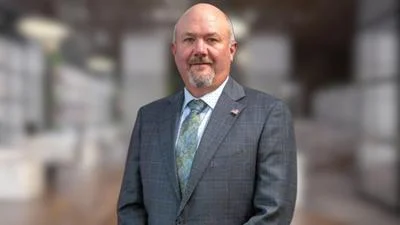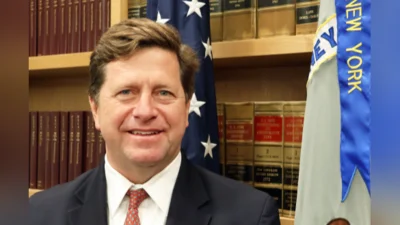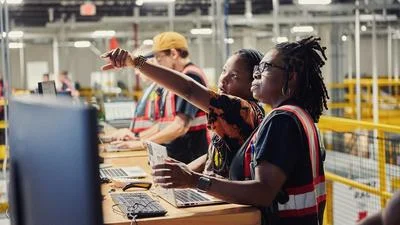The Congressional Record is a unique source of public documentation. It started in 1873, documenting nearly all the major and minor policies being discussed and debated.
“FROM CONFLICT TO COMPROMISE: THE NORMALIZATION OF RELATIONS BETWEEN THE UNITED STATES OF AMERICA AND VIETNAM” mentioning the U.S. Dept of State was published in the Extensions of Remarks section on pages E834-E835 on June 13, 2018.
The State Department is responsibly for international relations with a budget of more than $50 billion. Tenure at the State Dept. is increasingly tenuous and it's seen as an extension of the President's will, ambitions and flaws.
The publication is reproduced in full below:
FROM CONFLICT TO COMPROMISE: THE NORMALIZATION OF RELATIONS BETWEEN THE
UNITED STATES OF AMERICA AND VIETNAM
______
HON. SANFORD D. BISHOP, JR.
of georgia
in the house of representatives
Wednesday, June 13, 2018
Mr. BISHOP of Georgia. Mr. Speaker, given the recent National History Day contest, I am pleased to include in the Record a historical paper written by one of my constituents, Ms. Catherine Kennedy of Columbus, Georgia, entitled ``From Conflict to Compromise: The Normalization of Relations Between the United States of America and Vietnam.'' Catherine is representing Georgia in the Junior Division of the National History Day contest.
The Vietnam War ended with the signing of the Paris Peace Accords in 1973; however, the United States (U.S.) and Vietnam remained hostile for another two decades. After the war, Vietnam stayed aligned with the Soviet Union, while the U.S. treated Vietnam as a hostile power imposing trade embargos, blocking international loans, and refusing to open diplomatic relations. With the collapse of the Soviet Union in 1991, Vietnam lost Moscow's support for its economy and was left on its own. Within the U.S., there was growing pressure to account for Prisoners of War (POW) and Missing In Action (MIA) from the Vietnam War. The hostility and conflict between the two countries turned to compromise in the mid-1990s when both countries needed each other to meet their individual national goals. For the Vietnamese, it was the end to the trade embargo and the normalization of diplomatic relations. For the Americans, it was the resolution of the long standing POW/MIA issue.
The Vietnam War started long before President Lyndon Johnson introduced ground combat troops into South Vietnam in 1965. The war actually started immediately after the defeat of Japan in World War II when communist forces under Ho Chi Minh battled French forces for independence gaining victory in 1954. After the French collapse and withdrawal, Vietnam was divided into North and South Vietnam along the 17th parallel.
Relations between North and South Vietnam continued to deteriorate over the years and the United States, fearing the spread of communism in Asia, introduced advisors and aid to South Vietnam. In 1964, a disputed naval incident in the Gulf of Tonkin led Congress to authorize military action. Before the end of 1967, over 500,000 ground troops were in Vietnam.
By 1973, the Vietnam War seemed unwinnable to Americans. Amid mounting protests at home and facing a war weary public, the United States signed the Paris Peace Accords bringing a ceasefire to the battlefield. At the same time, Hanoi released 591 American POWs during Operation Homecoming. Unfortunately, many American servicemen remained unaccounted for after this release. The fate of these missing servicemen remained an obstacle to normalizing relations between the U.S. and Vietnam for the next twenty years.
After the return of the POWs in 1973, almost 2200 servicemen remained unaccounted for or missing. Most of the missing were in Vietnam, but some were in the neighboring countries of Laos and Cambodia. As the U.S. and Vietnam approached the 20-Year anniversary of the end of the war, pressure mounted in both countries to settle the issues. Families of the missing in the U.S. put intense political pressure on their government to get the fullest possible accounting for those lost, while factions in Vietnam wanted access to trade and markets in the U.S. to help develop and modernize its economy. Mr. Vu Chi Cong, Chief of Staff, for the Vietnamese Ministry of Foreign Affairs (The Vietnamese State Department) in discussions with U.S. officials reiterated that the Vietnamese needed help with their economy. Specifically, they wanted access to the International Monetary Fund and World Bank loans, favorable trade status with the United States with access to markets, the ability for U.S. based companies to invest in Vietnam and open factories, access to U.S. construction companies to bid on internal infrastructure projects like the repaving of National Highway 1, and finally, the ability for Vietnamese students to study abroad at American Universities. At no time did the Vietnamese discuss better relationships would counter increased Chinese influence in the region or bring up the disputed Spratly Islands.
These pressures moved the former enemies from conflict to compromise resulting in the opening of the U.S. Embassy in Hanoi in August 1995. The cooperation between the U.S. and Vietnam in accounting for the missing between 1992-1995 made compromise possible. By the time the Embassy opened, the list of missing had decreased to 1,615 servicemen. The Vietnamese, by all measures evaluated by the U.S., were fully cooperating in rendering the fullest possible accounting for missing Americans.
The belief in Vietnamese cooperation was fairly new. After the Paris Peace Accords of 1973, many people in the U.S. believed Vietnam still held POWs in secret prison camps throughout the country. As proof, they pointed to random but sensational reports of missing Americans seen in Vietnam. Sensational actions by activists, like Billy Hendon, drew attention to the subject. With these reports of servicemen still being held captive, the National League of Families
(NLF) formed to pressure for release of any POW/MIAs still in captivity. The NLF put constant political pressure on the U.S. government to bring our missing home. They kept the issue alive as Vietnam sought to normalize relations with the U.S.
Throughout the years, one question challenged U.S. officials: how could the U.S. measure Vietnamese cooperation on the POW/MIA issue? President George Bush first defined the measures and President Bill Clinton validated them again in March 1992. Vietnamese cooperation was measured in four specific areas: 1. Recovery and identification of remains; 2. Access to documents; 3. Trilateral cooperation (U.S./Vietnam/Laos for border cases); and 4. Support for field operations/investigations.
The Vietnamese knew what the U.S. measured and understood cooperation would, in the end, get them the normalization and trade they wanted. Vietnam decided to cooperate so that by February 1994, President Clinton could lift the trade embargo on Vietnam. This action further encouraged cooperation between the U.S. and Vietnam to discover the fate of American POW/MIAs remaining unaccounted for after the war. Clinton also believed improved business relations between the U.S. and Vietnam benefited both countries.
Once the trade embargo was lifted, Vietnamese cooperation got even better. The cooperation was observed, documented, and evaluated by Joint Task Force Full Accounting (JTF-FA) and its forward detachment working in Hanoi, Vietnam. See Appendix I-IV for pictures depicting the JTF-FA cooperation. The Defense Department formed JTF-FA in 1992. Its mission was to resolve the status of missing servicemen. They oversaw all investigations and recovery missions in Vietnam. Their main goal was recovery and transfer of remains to the U.S. for identification and eventual return to their families.
Initially, Vietnam seemed slow to provide documents dealing with the POW/MIA issue; however, with continued pressure and increasing trade with the U.S., Hanoi gradually provided reports, opened a Joint Documents Center, while continuing support for recovery operations across the country. See Appendix II for depiction of operations. At the same time, they provided amnesty to witnesses the U.S. wished to interview. The Central Intelligence Agency reported,
``Vietnam has become more cooperative in receiving questions concerning U.S. personal reported as possible prisoners of war or missing in action in the Vietnam War. The government has made several important gestures including:
Turning over more remains and material evidence than during the preceding 13 years. See Appendix III for picture of turning over remains and material evidence.
Participating, for the first time, in joint investigations of site where American planes crashed or missing service members were last seen
Beginning in 1990, giving U.S. experts access to military museums and archives containing records detailing Vietnamese investigation of American losses.
The areas highlighted in the report directly align to the measures the U.S. evaluated when assessing Vietnamese cooperation. Additionally, by the time a normalization decision was made, the Vietnamese had turned over close to 30,000 documents related to 820 cases. At the same time, they provided over 2,000 photographs and opened a Joint Documents Center where U.S. and Vietnamese investigators could work.
Recovery operations done by JTF-FA became a key measure of Vietnamese cooperation. Formal repatriation ceremonies were held in Hanoi and Hawaii after each recovery operation as depicted in Appendix 7. JTF-FA conducted missions five to six times a year in Vietnam to excavate sites, conduct investigations, and recover bodies of missing American servicemen. Each mission lasted thirty to forty-five days. Site locations ranged from mountainous terrain, farmland, and even underwater. Recovery sites were controlled just like archeological digs. Any remains of servicemen found were turned over after each operation for identification by the U.S. Army Central Identification Lab in Hawaii (CILHI).
Showing cooperation, the Vietnamese created the Vietnamese Office Seeking Missing Persons (VNOSMP). This office staffed by members of the Ministry of Foreign Affairs, the military, and the Ministry of the Interior worked with JTF-FA solving cases. Many of the Vietnamese assigned to the work lost relatives in the war. One official, Senior Colonel Tran Bien, when interviewed on why he supported recovery operations said simply, ``it is the right thing to do.'' Appendix 1-4 depict pictures of Vietnamese support to recovery operations under the VNOSMP. Note: Senior Colonel Bien died in a helicopter crash during a recovery operation in April 2001 killing sixteen Vietnamese and Americans.
As cooperation continued, the U.S. successfully recovered and identified missing servicemen. For example, because of cooperation, cases like Captain Charles Barnes were solved. See Appendix V for picture of Captain Barnes. Captain Barnes became MIA after his aircraft failed to arrive at Da Nang, Vietnam. JTF-FA led multiple investigations in 1993, 1999, and in 2000 when his crash site was excavated. Captain Barnes' remains were eventually returned to his family for burial.
According to a report by JTF-FA Detachment 2 in Hanoi, Vietnamese cooperation throughout the period remained excellent. All recovery team leaders commented positively on cooperation at the central, provincial, and local levels of government. One team leader described cooperation and the Vietnamese preparation done to support the joint field operations, as the best he'd ever seen in Vietnam. Additionally, reports from senior JTF-FA officials in Vietnam: Col. Mel Richmond (1994-95) and Col. Timothy Bosse
(1995-96) rated Vietnamese cooperation as high.
As cooperation strengthened, Vietnam saw the benefits of growth. The U.S. paid Vietnam for its workers, equipment, and land use. Millions of dollars a year went to the Vietnamese government in support of recovery operations. The CIA concluded ``Hanoi's cooperation has been sparked by its impression that relations with the U.S. are warming, albeit at a slower pace than Vietnam would like, and is fueled by Hanoi's desperate need to attract financial assistance to improve the sagging Vietnam economy. We believe that Hanoi is badly interested in access to badly needed funds from the International Monetary Fund and The World Bank; Hanoi probably hopes a more cooperative attitude on the POW MIA issue will weaken the U.S. resistance to loans''.
Additionally, there was a new generation of Vietnamese wanting the war put behind them. They called it a ``musty history.'' Many young Vietnamese wanted to enter the business world. They wanted Vietnam to find its identity and catch up economically with the rest of South-East Asia. A cornerstone to solidify strengthening relations and putting the past behind them was the opening of the U.S. embassy in Vietnam in August 1995 in Hanoi. With the opening, President Clinton extended full diplomatic recognition to Vietnam.
The opening of the embassy, as depicted in Appendix 6, finished a process begun by the Bush Administration in 1991 when Washington and Hanoi agreed on steps for recognition. President Clinton stated, ``This moment offers us the opportunity to bind up our own wounds,'' evoking words used by Lincoln at the end of the Civil War. ``They have resisted time for too long. We can move onto common ground.'' Clinton also stated he would continue to press Vietnam for full accounting of our remaining missing service personnel. He argued that in the months after lifting the trade embargo more than 29 missing Americans were identified and Hanoi turned over hundreds of pages of relevant documents. At the same time, Vietnam's Prime Minister, Vo Van Kiet, pledged to the U.S. to continue cooperation in helping account for missing service members.
In the end, both countries got what they needed turning conflict into compromise. The U.S. got cooperation on the POW/MIA issue to include conducting recovery operations within Vietnam. Vietnam received desperately needed money for economic development, access to loans, and increased trade. With renewed diplomatic relations, trade, modern factories, and jobs soon followed. Companies such as Coke, IBM, General Electric and ExXon to name a view invested in new plants providing much needed jobs to a poor country. Vietnamese cooperation continues today and relationships continue to improve. Just recently President Donald Trump hosted the Prime Minister of Vietnam Nguyen Xuan Phuc at the White House to chart an agenda for U.S.-Vietnam relations, building on the positive momentum of the comprehensive partnership between the two countries. Over the years, one thing a remained constant, providing the fullest possible accounting for the POW/MIAs. It remains the U.S.'s highest priority when dealing with Vietnam. Even today, recovery teams operate with the Vietnamese across the countryside. The compromises that took place in the 1990s led to cooperation and trust between two former enemies to the benefit of both countries.
____________________








